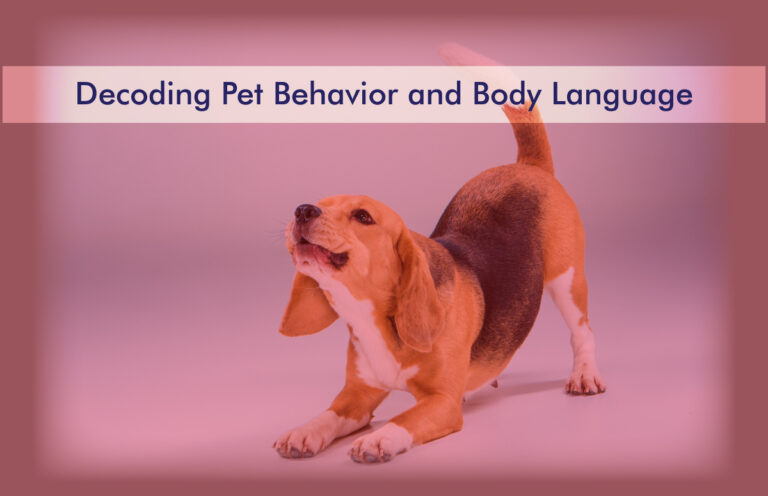How to Introduce a New Pet to Your Existing Pets
Table of Contents
- Introduction
- Choose a Compatible Pet
- Prepare Your Home
- Introduce Them Gradually
- Supervise and Monitor
- Reward and Reinforce
- FAQs
- Conclusion
Introduction
If you plan to add a new furry friend to your family, you might wonder how to make the transition smooth and stress-free for everyone involved. After all, you want your pets to get along and live in harmony. But introducing a new pet to your existing pets can be more challenging than you may have anticipated.
Many factors can affect how well they will accept each other, such as their personalities, temperaments, ages, breeds, and histories. And even if they are friendly and social, they might still need time and guidance to adjust to the new situation.
So how can you introduce a new pet to your existing pets in a way that minimises the risk of conflict and maximises the chances of success? Here are some tips and steps based on expert advice and research.
Choose a Compatible Pet
The first step in introducing a new pet to your existing pets is choosing a compatible one. This means considering your current and potential pets’ needs, preferences, and characteristics.
For example, suppose you already have a territorial or aggressive dog towards other dogs. In such cases, you might want to avoid getting another dog of the same sex or size. Instead, you might opt for a dog of the opposite sex or a smaller breed less likely to trigger your dog’s dominance or competition instincts.
Similarly, suppose you already have a cat that is shy or fearful of dogs. In that case, you should avoid getting a too energetic or playful dog. Instead, you might look for a calm and gentle dog or a cat-friendly breed that has been socialised with cats.
Of course, there are no guarantees that any two pets will get along, regardless of their compatibility. But by researching and consulting with experts, such as veterinarians, trainers, or shelter staff, you can increase your chances of finding a good match for your household.
Prepare Your Home
The next step in introducing a new pet to your existing pets is to prepare your home for the arrival of the newcomer. This means creating a safe and comfortable environment for your old and new pets.
Start by keeping the new pet in a separate room for the first few days. This will allow them to acclimate to their new surroundings and reduce their stress levels. It will also prevent any unwanted interactions or confrontations with your existing pets.
Ensure the new pet has everything in its room, such as food, water, a litter box (for cats), toys, a bed, and a scratching post (for cats). You can also add some items that have your scent or the scent of your existing pets, such as blankets or towels. This will help them get familiar with each other’s smells and associate them with positive things.

Meanwhile, make sure your existing pets have access to their usual resources and routines. Pay attention to their needs and attention during this period. You can also give them some treats or toys with the new pet’s scent. This will help them get used to having another animal in the house and associate it with something good.
Introduce Them Gradually
The third step in introducing a new pet to your existing pets is gradually teaching them. This means allowing them to see, hear, smell, and touch each other in controlled and supervised ways.
Start by letting them sniff and explore each other through the new pet’s room door. You can also swap their bedding or toys so they can smell each other more closely. Please do this for several days until they show curiosity or interest in each other.
Next, let them see each other through a barrier, such as a baby gate or a screen door. You can also use a leash or a carrier to restrain one or both of them. Keep these visual introductions short and positive. Praise and reward both pets for calm and friendly behaviour. If they show any signs of aggression or fear, such as growling, hissing, barking, or hiding, end the session and try again later.
Finally, let them interact with each other without any barriers. You can do this in a neutral area neither pet has claimed as its territory. Make sure both pets are relaxed and comfortable before letting them meet. Keep them on a leash or a carrier at first, gradually giving them more freedom as they get along. Again, praise and reward both pets for good behaviour. If they have trouble, separate them and return to the previous step.
Supervise and Monitor
The fourth step in introducing a new pet to your existing pets is to supervise and monitor their interactions. This means keeping an eye on them and intervening if necessary.
Even if your pets seem to get along well, you should only leave them alone together once you are sure they are entirely comfortable and trustworthy with each other. Depending on the individual pets and their personalities, this might take days, weeks, or even months.
It would help if you also watched out for any signs of stress or discomfort in either pet, such as panting, drooling, trembling, yawning, licking, or avoiding eye contact. These might indicate that they are not ready for more contact or need a break from each other.
Additionally, you should monitor their body language and vocalizations for any signals of aggression or fear, such as stiffening, staring, snarling, snapping, biting, scratching, or running away. These might indicate that they are feeling threatened or overwhelmed by the other pet.
If you notice these signs, you should immediately intervene and separate the pets. You can use a loud noise, such as a clap or a whistle, to distract them and break up the tension. You can also use a spray bottle, a blanket, or a pillow to create a barrier between them. Never use your hands or feet to separate fighting pets, as you might get injured.
Reward and Reinforce
The fifth and final step in introducing a new pet to your existing pets is to reward and reinforce their positive interactions. This means giving them treats, praise, toys, or attention whenever they behave well around each other.
By rewarding and reinforcing their good behaviour, you are teaching them that being with the other pet is fun and rewarding. You are also creating a positive association between them and strengthening their bond.
You can also use training techniques to help your pets get along better. For example, you can teach them basic commands, such as sit, stay, come, and leave. You can teach them tricks like shaking, rolling over, or high five. These will help you control their behavior and keep their minds stimulated.
You can also use some games to help your pets have fun together. For example, you can play fetch, tug-of-war, hide-and-seek, or chase with them. These will help them burn off some energy and enjoy each other’s company.
FAQs
Here are some of the most frequently asked questions for the blog post “How to Introduce a New Pet to Your Existing Pets” with the answers.
How long does it take for pets to get along?
It depends on the personalities and temperaments of the animals involved, but it can take anywhere from a few days to a few months for pets to adjust to each other.
What are some signs of stress or aggression in pets?
Some common signs of stress or aggression in pets are hissing, growling, barking, snarling, biting, scratching, hiding, trembling, panting, drooling, or avoiding eye contact.
How can I prevent fights or injuries between pets?
The best way to prevent fights or injuries between pets is to introduce them gradually and supervise them closely. You should also provide separate spaces, toys, food bowls, and litter boxes for each pet. If you notice any tension or conflict, separate the pets immediately and try again later.
How can I make the new pet feel welcome and comfortable?
You can make the new pet feel welcome and comfortable by giving them plenty of attention, praise, treats, and affection. You should also respect their boundaries and let them explore their new environment at their own pace. You can also use calming products such as pheromones or aromatherapy to reduce stress and anxiety.
How can I help my existing pets cope with the change?
A: You can help your existing pets cope with the change by maintaining their routine and normal activities as much as possible. You should also reassure them that they are still loved and valued by spending quality time with them and rewarding them for good behaviour. You can also use positive reinforcement to encourage them to interact with the new pet in a friendly manner.
What are some factors that can affect how well pets get along?
Some factors affecting how well pets get along are their age, gender, breed, size, health, history, personality, and socialization. Generally speaking, pets that are similar in age, size, and energy level tend to get along better than those that are very different. However, every pet is an individual, and there are exceptions to every rule.
How can I tell if my pets like each other?
Some signs that your pets like each other are playing together, grooming, sleeping together, sharing toys or food, or following each other around. However, some pets may only become best friends and prefer to coexist peacefully with little interaction. That is okay as long as they are not fighting or hurting each other.
What should I do if my pets don’t get along?
If your pets don’t get along after several weeks or months of trying, you may need to consult a professional trainer or behaviourist for advice. They can help you identify the problem’s root cause and suggest solutions tailored to your specific situation. They can also teach you how to manage your pets safely and effectively.
Can I introduce more than one new pet at a time?
Introducing more than one new pet at a time is not recommended, as it can overwhelm your existing pets and create more stress and chaos. It is better to introduce one new pet at a time and wait until they are fully integrated before adding another one. This way, you can give each pet the attention and care they need.
What are some resources that can help me with introducing a new pet?
Some resources that can help you with introducing a new pet are books, websites, blogs, podcasts, videos, or online forums that offer tips and advice on pet behaviour and training. You can also ask your veterinarian, local shelter, rescue group, or pet store for recommendations or referrals. You can also join online communities or groups to share your experiences and learn from others who have undergone the same process.
Conclusion
Introducing a new pet to your existing pets can be challenging but rewarding. Following these tips and steps can make the process easier and smoother for everyone involved.
Remember to choose a compatible pet, prepare your home, introduce them gradually, supervise and monitor their interactions, and reward and reinforce their positive behaviour. And most importantly, be patient and consistent with your pets. They might need some time to accept each other and become friends.
But once they do, you will have a happy and harmonious household with more love and joy.







